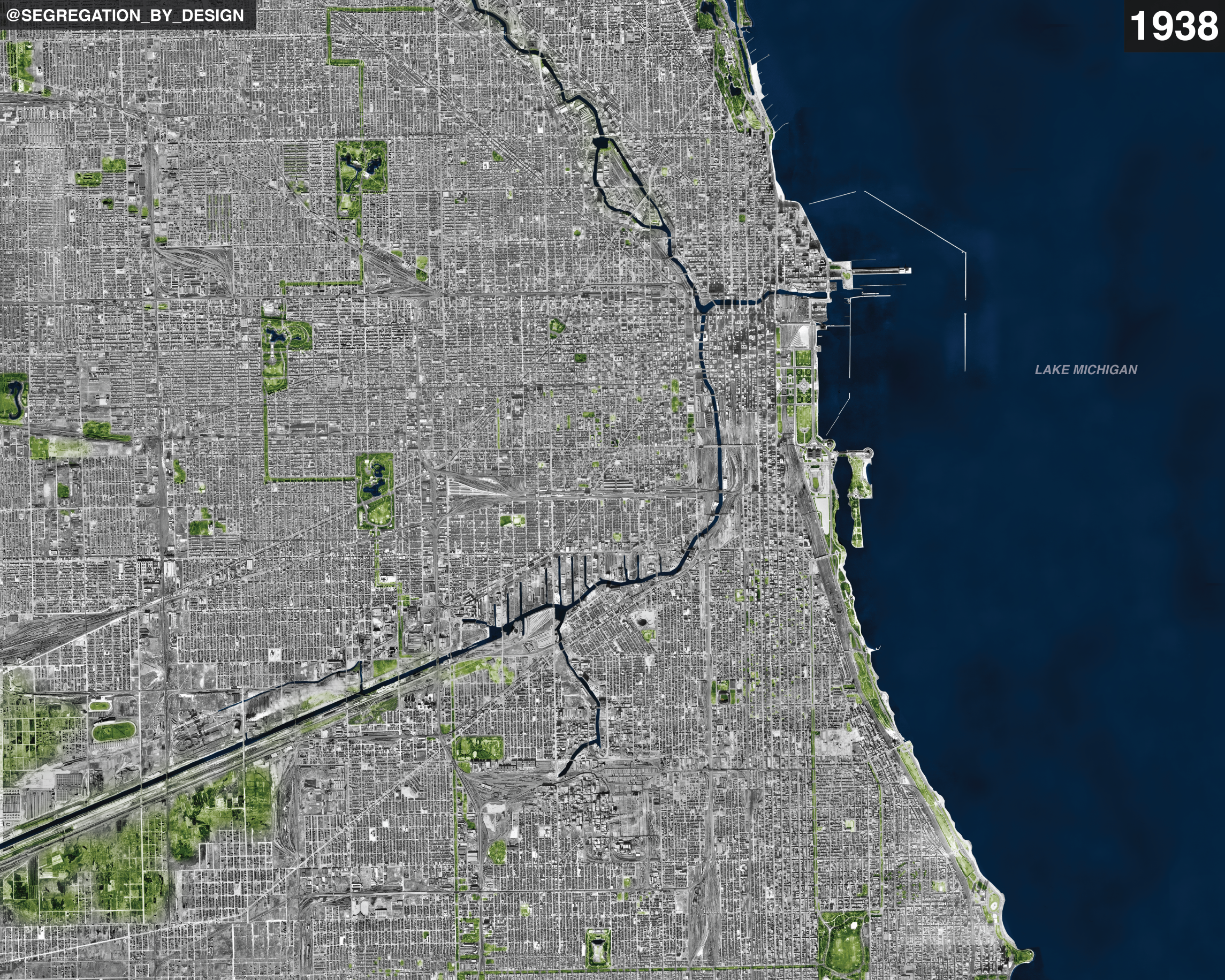CHICAGO: FREEWAYS & URBAN RENEWAL
Seen here is Chicago before and during the throes of “urban renewal.” By the late 1970s, 81,000 people had been displaced in Chicago due to federally-funded freeway construction and “urban renewal” schemes. Despite making up 23% of the total population of Chicago in 1960, 64% of those displaced were Black. Much of the rest were recent European immigrants on the North Side, Hispanic people on the West Side, and Asian-Americans (Chinatown, on the South Side, was cut in half by the bizarrely braided interchange with I-55 and walled off to the east by stub-end approach ramps of I-90).
The government had specifically targeted these communities beginning in the 1930s through the practice of redlining, in which neighborhoods in cities across the country were graded for investment value—based on race. Communities of color and racially-integrated neighborhoods were graded lowest, with any investment officially deemed “hazardous.” The effect of redlining was to crater property values and tax bases, thus reducing municipal services and creating a feedback loop of urban decay. More info on redlining in Chicago to come, as well as in other cities in previous posts.
Later, between the 50s-80s, using the policies of “urban renewal,” “slum clearance,” and freeway construction, the federal government financed the physical decimation of these neighborhoods—which, after years of neglect and decay, were unable to successfully resist the assault. As seen in the images above, whole neighborhoods were flattened to make way for suburban, automobile focused land-uses such as single-use office complexes, entertainment facilities, outsized institutional expansion—or often simply parking.
Displaced white residents were lured to newly built, whites-only suburbs by the new highways and by generous federally-subsidized mortgages (these suburbs had what were known as “restrictive covenants” written into the deeds, permitting sale to “members of the caucasian race only”); while the displaced residents of color were either shunted to poorly constructed public housing projects, or simply given no assistance at all.


